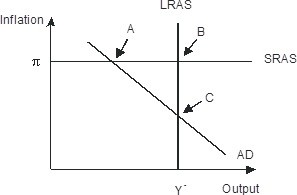Pure monopoly refers to:
A. any market in which the demand curve to the firm is downsloping.
B. a standardized product being produced by many firms.
C. a single firm producing a product for which there are no close substitutes.
D. a large number of firms producing a differentiated product.
Answer: C
You might also like to view...
Economic growth would be illustrated by
A) a rightward shift of aggregate demand. B) a leftward shift of aggregate demand. C) a rightward shift of aggregate supply. D) a leftward shift of aggregate supply.
Suppose there is an increase in the supply of a good. Which of the following statements is true?
A. The closer the demand curve is to being vertical, the larger the decrease in equilibrium price, and the smaller the increase in equilibrium quantity. B. The closer the demand curve is to being horizontal, the larger the decrease in equilibrium price, and the smaller the increase in equilibrium quantity. C. The closer the demand curve is to being vertical, the smaller the decrease in equilibrium price, and the larger the increase in equilibrium quantity. D. The closer the demand curve is to being vertical, the larger the increase in equilibrium price, and the smaller the decrease in equilibrium quantity.
The economy pictured in the figure below has a(n) ________ gap with a short-run equilibrium combination of inflation and output indicated by point ________. 
A. recessionary; B B. recessionary; C C. recessionary; A D. expansionary; A
As a result of moral hazard
A. both physicians and hospitals order more procedures. B. patients increasingly have to worry about the expense of operations and other medical procedures. C. physicians and hospital administrators have no incentive to raise costs. D. both physicians and hospitals have a financial interest in trying to keep hospital costs down.